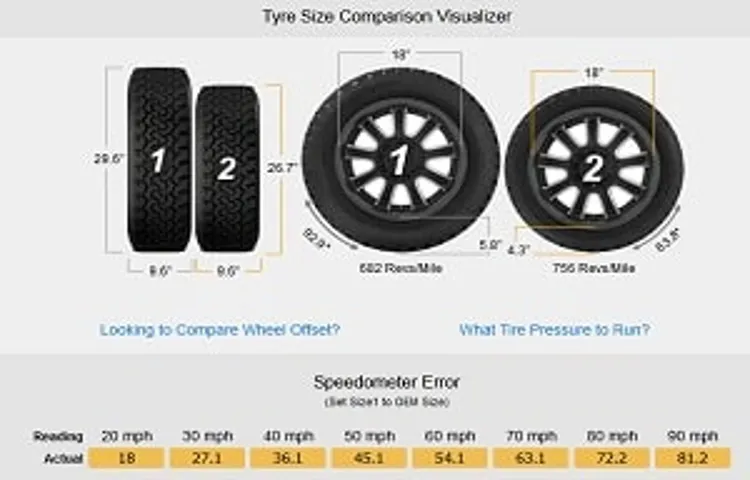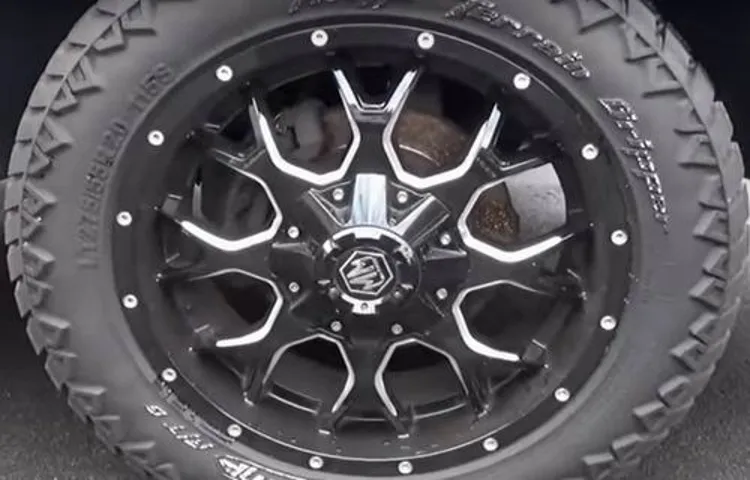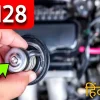Have you ever found yourself questioning the accuracy of your speedometer? It’s a common experience for many drivers who may notice that their vehicle’s speedometer readings don’t match up with their speedometer app or other means of measuring vehicle speed. This discrepancy can be caused by a variety of factors, including tire size, which is often overlooked. In this blog post, we’ll explore how tire size affects speedometer accuracy and what you can do to ensure your speedometer readings are always reliable.
So fasten your seatbelts as we delve into this fascinating topic!
Table of Contents
Understanding Tire Measurements
Have you ever wondered how your tire size affects your speedometer? The simple answer is that it can. When you change the size of your tires, it can alter the overall diameter of the tire, which in turn can affect the speedometer’s measurement. For example, if you opt for larger tires, the speedometer will show a slower speed than the actual speed you are driving due to the reduced rotations of the tire per mile.
On the other hand, if you opt for smaller tires, the speedometer will show a faster speed than the actual speed due to the increased rotations of the tire per mile. In either case, a change in tire size can make your speedometer readings inaccurate. It’s essential to ensure that the tire size you choose is appropriate and compatible with your vehicle to keep your speedometer working accurately.
Tire Width
Tire Width When it comes to understanding tire measurements, one aspect that often confuses people is tire width. The tire width refers to the distance from one side of the tire’s tread to the other side, measured in millimeters. It’s an important measurement because it affects the tire’s grip on the road, its ability to handle water and other debris, and its overall performance.
A wider tire will offer more grip and stability, but can also increase rolling resistance and reduce fuel efficiency. Conversely, a narrower tire will have less grip and stability, but can increase fuel efficiency and reduce rolling resistance. It’s important to choose the right tire width based on your vehicle type, driving conditions, and personal preferences.

Aspect Ratio
Aspect ratio Understanding tire measurements can be quite confusing, but one important aspect to consider is the tire’s aspect ratio. This refers to the height of the tire’s sidewall as a percentage of the tire’s width. For example, if a tire has a width of 225mm and an aspect ratio of 50, then the height of the sidewall would be 50% of 225mm, which is 11
5mm. Aspect ratio plays a significant role in the handling and stability of a vehicle. Typically, low aspect ratios provide better handling, steering response, and cornering ability, as they have a shorter sidewall, whereas high aspect ratios offer a more comfortable ride with better shock absorption.
Moreover, a change in aspect ratio could impact the speedometer’s accuracy, so it is essential to consider this factor when purchasing replacement tires. Understanding and choosing the right aspect ratio for your vehicle can be overwhelming, but it is crucial for safe driving and optimal performance.
Rim Diameter
Rim Diameter When it comes to buying new tires, understanding the measurements can be overwhelming. One key measurement to consider is the rim diameter. This refers to the distance across the wheel where the tire sits and is typically measured in inches.
It’s important to select the correct rim diameter for your vehicle to ensure a proper fit. Using tires with an incorrect rim diameter can not only affect performance but also create safety hazards. To find the correct rim diameter for your vehicle, consult your owner’s manual or check the current tire’s sidewall for the measurement.
Keep in mind that changing the rim diameter can ultimately affect the overall look and function of your vehicle. So, be sure to research and consult a professional before making any significant modifications.
Calculating Speedometer Reading
Have you ever changed the size of your car’s tires and noticed your speedometer reading seemed off? This is because tire size does affect your speedometer reading. When you change the size of your tires, it changes the distance traveled with each rotation, known as the tire’s revolutions per mile (RPM). The speedometer is calibrated based on the tire’s RPM, so if you change the tire size, the speedometer can no longer accurately calculate your speed.
For example, if you increase tire size, your speedometer may read slower than your actual speed, while decreasing tire size may make it read faster. To ensure an accurate speedometer reading, you’ll need to have it recalibrated after altering your tire size. This will help ensure your speedometer is reading correctly and you’re staying within legal speed limits.
So, the next time you plan to switch up your car’s tires, keep in mind how it may affect your speedometer reading.
Impact of Tire Size Change
Changing the tire size on your vehicle can have an impact on the accuracy of your speedometer reading. Your speedometer is calibrated to show your vehicle’s speed based on the diameter of your vehicle’s tires. Therefore, if you change the tire size, it can affect the readings on your speedometer.
Luckily, calculating the new speedometer reading is a simple process that you can do at home. To calculate the new speedometer reading, you need to know the difference in diameter between your old and new tires. Once you have this information, you can divide the new tire diameter by the old tire diameter and then multiply that result by your current speedometer reading.
This will give you your new and more accurate speedometer reading. It’s important to keep an eye on your speedometer reading after changing tire sizes to ensure you are not exceeding speed limits or driving unsafely. By using this equation and monitoring your speedometer, you can ensure a smooth and safe ride.
Speedometer Calibration
Speedometer Calibration Knowing your car’s speedometer reading accurately is essential to avoid speeding tickets and ensure your safety on the road. But what if your speedometer does not display the exact speed you are driving? This could be because of incorrect tire size, gear ratio changes, or modifications to the vehicle’s transmission. In such cases, you need to calibrate your speedometer to obtain accurate readings.
The calibration process involves adjusting the speedometer’s signal to match the actual speed. To calculate your car’s speedometer reading, you’ll need to know the tire size, gear ratio, and the speed your vehicle is traveling at. Using these values, you can then calculate the distance the vehicle travels per revolution and divide it by the total revolutions per mile.
Finally, you can use this value to adjust the speedometer’s signal to match the actual speed. Calibration is usually performed by a professional mechanic and may involve replacing gears or sensors in the speedometer system. A precise speedometer reading not only helps you avoid tickets but also prolongs the life of your car’s components and ensures an efficient driving experience.
Example Calculation
Calculating speedometer readings is an important aspect of ensuring that your vehicle is operating safely and efficiently. The formula used to calculate your speedometer reading is based on the size of your tires, the number of rotations per minute of the drive shaft, and the gear ratio of the transmission. To calculate your speedometer reading, you will need to determine the circumference of your tire by measuring the distance around the outer edge of the tire.
Once you have this measurement, you can use it to calculate the number of rotations per mile by dividing 5280 by the circumference of your tire. Finally, you can calculate your speedometer reading by multiplying the number of rotations per minute of the drive shaft by the gear ratio of the transmission and dividing the result by the number of rotations per mile. By understanding how to calculate your speedometer reading, you can ensure that your vehicle is in proper working order and avoid any potential safety issues on the road.
Potential Consequences of Incorrect Speedometer Reading
If you’re a car enthusiast or someone who frequently deals with tire replacements, you may have wondered: “How does tire size affect speedometer reading?” This is an important question to consider because an incorrect speedometer reading can lead to potential consequences such as speeding tickets or inaccurate mileage readings. When you change your tire size, you are essentially changing the circumference of the wheel. A larger tire size would have a greater circumference, resulting in a higher speedometer reading than the actual speed of the car.
Conversely, a smaller tire size would have a smaller circumference, resulting in a lower speedometer reading than the actual speed of the car. Therefore, it’s important to adjust the speedometer reading accordingly to avoid any inaccuracies. You can do this by recalibrating the speedometer or installing a new speedometer gear.
By taking the necessary steps, you can avoid any negative consequences that may arise from an incorrect speedometer reading.
Legal Penalties
Getting caught with an incorrect speedometer reading can lead to serious legal penalties. Depending on the severity of the offense, fines and points on your driver’s license could be added to your punishment. In extreme cases, you could even lose your license or end up with a criminal record.
It’s important to make sure your speedometer is accurately calibrated, as the consequences can be severe. Think of your speedometer like a thermometer – you wouldn’t want to rely on a faulty thermometer to determine whether you have a fever or not, and you shouldn’t rely on a faulty speedometer to determine how fast you’re driving. It’s worth taking the time to make sure your speedometer is accurate, to avoid any legal consequences that could arise from an incorrect reading.
Safety Concerns
When driving, it’s essential to keep your eyes on the road, obey traffic rules, and ensure that your vehicle is in good condition. One thing that most drivers tend to ignore is their speedometer reading. Incorrect readings can lead to hazardous outcomes, possibly resulting in a car accident.
For instance, if your speedometer tells you that you’re driving 55 mph while you’re, in reality, driving at 70 mph, you’re risking your safety and the safety of those around you. It increases your chances of losing control of the vehicle, especially when trying to brake suddenly. The consequences of such an accident could be dire, resulting in fatalities, serious injuries, and significant property damage.
Therefore, it’s critical to ensure that your speedometer is working accurately and in line with the speed limit. A quick calibration check can save your life and those around you while driving on the road.
Conclusion
In summary, the relationship between tire size and speedometer accuracy boils down to this: bigger tires equal slower readings, while smaller tires equal faster readings. So, while it may be tempting to upgrade to bigger and better wheels, remember that it might throw off your trusty speedometer. And remember, always drive safely and responsibly, regardless of your tire size!”
FAQs
What is the relationship between tire size and speedometer accuracy?
The size of your car’s tires can affect the accuracy of your speedometer. If you change the size of your tires without adjusting the speedometer, it can cause your speedometer to inaccurately display your speed.
How can I tell if my speedometer accuracy is affected by tire size?
You can check your speedometer accuracy by comparing it to a GPS speedometer app on your phone while driving at a steady speed. If the two readings differ, your speedometer may be affected by tire size.
Can changing my tire size affect my car’s fuel efficiency?
Yes, changing your tire size can affect your car’s fuel efficiency. Larger tires can cause your car to consume more fuel, while smaller tires can improve fuel efficiency.
Is it illegal to change the size of my car’s tires without adjusting the speedometer?
It can be illegal to change the size of your car’s tires without adjusting the speedometer, as it can cause your speedometer to display an inaccurate speed.
Can I adjust my car’s speedometer myself after changing tire size?
It is possible to adjust your car’s speedometer yourself after changing tire size, but it can be a complex process. It is recommended to seek assistance from a mechanic or auto professional.
Can tire size affect my car’s handling and traction?
Yes, tire size can affect your car’s handling and traction. Larger tires can improve grip and handling, but can also increase braking distance. Smaller tires can decrease grip and handling, but can also improve maneuverability.
Are there any benefits to changing my car’s tire size?
Changing your car’s tire size can have benefits such as improved handling, improved looks, and increased ground clearance. However, it can also have drawbacks such as reduced fuel efficiency and potential legal issues.



